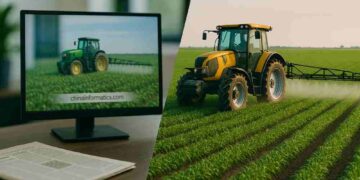Nationwide Mapping Technology to Guide Sustainable Agricultural Policy
An updated version of Brazil’s agricultural suitability map was officially unveiled during the 50th anniversary of Embrapa Solos, held on May 28, 2025, at the Ecovilla Ri Happy Theater – Tom Jobim Room, Rio de Janeiro. This advanced tool provides detailed data on the agricultural potential of lands across all Brazilian regions and is available on the Embrapa Spatial Data Infrastructure (GeoInfo) and PronaSolos platforms.
Developed as a 1:500,000 scale map, the technology identifies land use suitability at regional levels for intensive management cropping, planted pasture, forestry, or natural pasture. The resource aims to inform public policies, regional planning, and investment decisions focused on sustainable land use.
Scientific Collaboration and Institutional Support
The project was carried out by researchers from Embrapa Solos (RJ) and the Brazilian Institute of Geography and Statistics (IBGE), with funding from the Ministry of Agriculture (Mapa). Presented as a second approximation, the map is still under review and expected to be refined further to enhance accuracy and usability.
This collaborative mapping effort merges geospatial intelligence, soil science, and agronomic criteria, offering a powerful decision-making tool for state and regional governments, planners, and agribusiness stakeholders.
Use Cases and Policy Relevance
The new suitability classification is designed to:
- Guide regional agricultural development strategies
- Support sustainable farming practices and conservation
- Assist in zoning regulations and rural infrastructure planning
By identifying varying land potentials under different management intensities, the tool provides critical insight into climate-resilient agriculture, soil conservation, and sustainable food production frameworks.
Digital Accessibility and Future Enhancements
The digital version of the map can be accessed on:
Users can view, download, and integrate the data into regional GIS systems. Upcoming revisions are expected to incorporate new datasets, refine soil capability indices, and enhance interpretation layers to expand its application in precision agriculture and policy-making.












